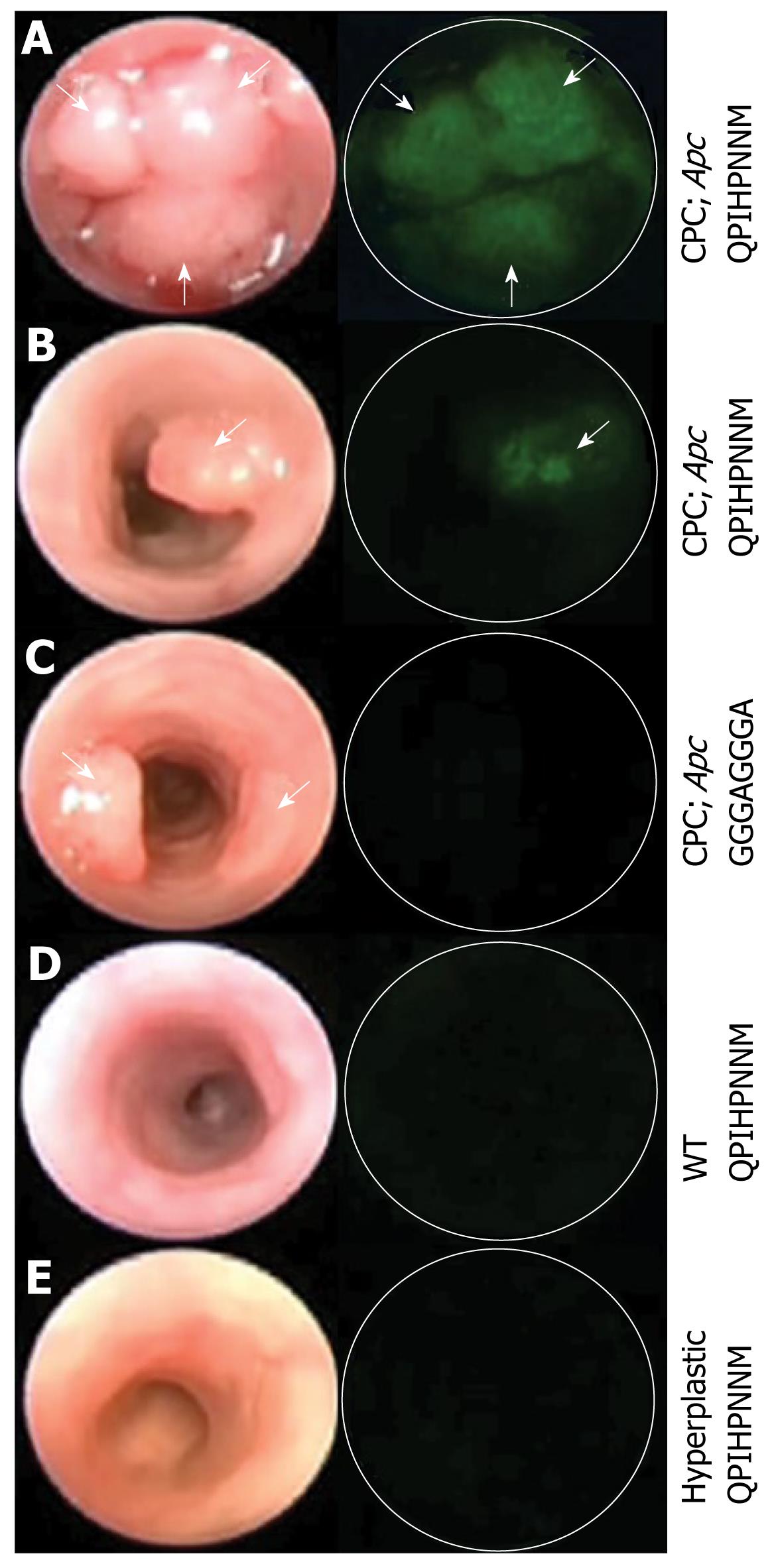Copyright
©2012 Baishideng Publishing Group Co.
World J Gastrointest Endosc. Mar 16, 2012; 4(3): 57-64
Published online Mar 16, 2012. doi: 10.4253/wjge.v4.i3.57
Published online Mar 16, 2012. doi: 10.4253/wjge.v4.i3.57
Figure 1 Images from wide-field endoscopy videos after topical application of fluorescence-labeled peptides.
The left and right columns represent frames from white light and fluorescence endoscopy, respectively. A: Multiple adenomas; B: Single adenoma in a CPC; Apc mouse. The fluorescently labeled target peptide shows positive binding to multiple adenomas and a single adenoma; C: The control peptide shows minimal binding to a single adenoma; D:Control mouse lacking Cre recombinase transgene; E:The hyperplastic epithelium in a mutant K-ras mouse model. The target peptide also shows minimal binding to control mouse and hyperplastic epithelium. White arrows identify adenomas. Reproduced from Miller et al[30].
- Citation: Kwon YS, Cho YS, Yoon TJ, Kim HS, Choi MG. Recent advances in targeted endoscopic imaging: Early detection of gastrointestinal neoplasms. World J Gastrointest Endosc 2012; 4(3): 57-64
- URL: https://www.wjgnet.com/1948-5190/full/v4/i3/57.htm
- DOI: https://dx.doi.org/10.4253/wjge.v4.i3.57









